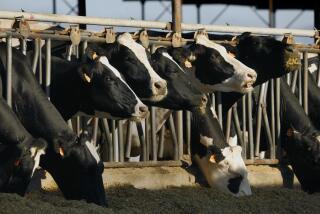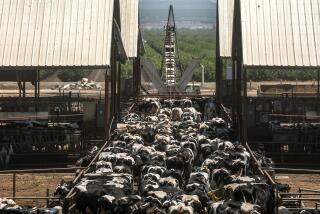U.S. Zookeepers on Front Lines of Avian Flu Defense
CHICAGO — As the nation tries to prepare for the potential arrival of a deadly avian flu, zoos are volunteering to be sentinels.
Agencies already keeping watch include the U.S. Department of Agriculture, which monitors farm animals, and the U.S. Department of Fish and Wildlife.
But the United States’ 210 accredited zoos are particularly useful because every major population center has one, and zoos’ diverse animal populations are under close daily observation by keepers alert to abrupt health changes.
If zoo animals are stricken, zoo officials said, keepers will know almost immediately and pass the information to the national monitoring system.
“There are certain unique places to look for these virus introductions, but there aren’t too many of them in a metropolitan area like Chicago,” said Lincoln Park Zoo’s veterinary epidemiologist, Dominic Travis.
Zoos are familiar with such monitoring because of their ongoing effort to track and characterize the carriers and victims of West Nile virus. “We still have the infrastructure in place with all of our local, state and federal partners for West Nile, so it shouldn’t be too difficult to adapt it to this new, even more dangerous issue of avian flu,” Travis said.
Concern is growing among government and public health officials worldwide about the H5N1 strain of influenza, which has infected millions of birds in Asia. It is beginning to show up in birds in Europe and has already demonstrated the ability to infect many mammals, including humans.
If it mutates into a strain easily passed from human to human, H5N1 will probably be extremely virulent, because it is so different genetically from normal flus. The world might then face an influenza pandemic akin to the so-called Spanish flu of 1918 that killed as many as 50 million people worldwide.
So far, H5N1 has not been seen in the U.S.
Travis was at the center of putting together the national West Nile monitoring system three years ago, because he was then the only zoo veterinary epidemiologist in the country.
He is helping put together a similar system for avian flu monitoring, working with the American Zoo and Aquarium Assn. on guidelines.
“Zoo monitoring is one of a variety of things that need to happen in this country to be on the lookout for avian flu,” said William Paul, a Chicago Department of Public Health physician who worked with Travis to set up the West Nile monitoring partnership. “Veterinary health is a critical part of the big picture of looking for new things that could affect human health.”
Flu viruses can infect all sorts of species, Travis said, so flu season is always a concern to zoos. But the H5N1 strain is especially worrisome because it has already proved to be lethal to zoo animals, killing 25 tigers in Asian zoos.
If H5N1 shows up in this country, it will be big news, widely reported, just as the mosquito-borne West Nile virus was, Travis said. Once it’s here, however, it will be important to continue reporting it routinely to proper authorities in the monitoring network to gain insight into its spread, he said.
As with West Nile virus, the chances of a human visitor contracting avian flu from a zoo animal is almost nonexistent, Travis said, because visitors are usually separated from the animals by barriers, either windows or distance, that would prevent transmission.
West Nile virus only recently reached the West Coast, so that monitoring program will continue for years, as will the avian flu program, he said.
“Zoos and zoo veterinarians don’t claim expertise on human health,” he said, “but we have expertise on issues that affect human health -- like avian flu and West Nile virus.”
More to Read
Sign up for Essential California
The most important California stories and recommendations in your inbox every morning.
You may occasionally receive promotional content from the Los Angeles Times.










